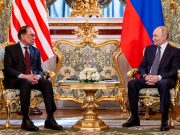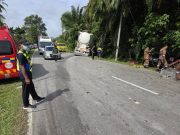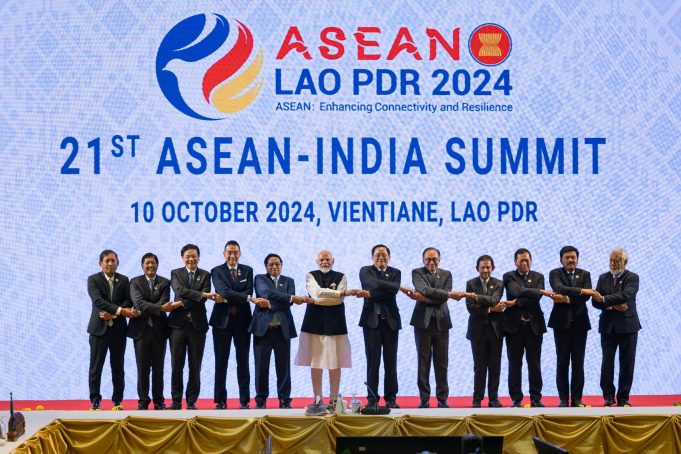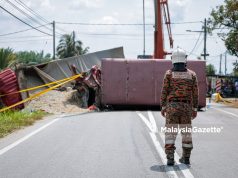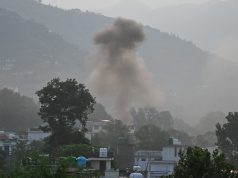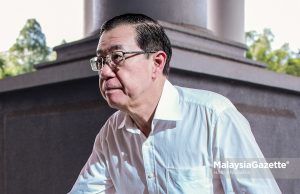ASEAN has a long and rich history, but its main tenets and essence of its self-induced mantra of principles have many times failed to spark new confidence in bracing for the tough challenges to come.
The recently concluded ASEAN Summit and Related Summits in Vientiane have also portrayed the same old trappings within the entity and beyond exposing the deep lying structural and systemic loopholes and internal weaknesses that have over the decades slowed progress and frustrated many within and without, over the road not taken.
The division within ASEAN has weakened unity and collective resolve, giving other powers the advantage of dealing with member states individually rather than with ASEAN as a whole. Previous mechanisms, such as the Declaration on the Conduct of Parties (DoC) and efforts to accelerate the Code of Conduct (CoC) process, are seen as only preventive frameworks that establish guardrails and norms of behavior in the South China Sea.
These mechanisms do not directly address the resolution of disputes but merely ensure that behaviours in the contested zones adheres to an agreed code of ethics and procedures, relying on the goodwill of involved states to follow norms and exercise self-restraint.
However, the core issues remain unresolved, particularly the need for compliance with international law and maritime law, ensuring that actions do not exceed agreed-upon limits. These laws serve as the foundation for peace, stability, and behavior, based on the rule of law and respect for the sovereignty and territorial integrity of nations, in line with international law. They should not be interpreted according to historical perspectives or individual viewpoints.
The focus should be on deepening ties with other equally, if not more, important powers in the region especially India and Australia apart from the traditional and conventional powers that have been relied upon in trade, economic development and technological advancement and inflow. Existing economic, trade and people to people ties that have been robust with Tokyo, Taipei and Seoul must also be enhanced to have the long term spillover impact on matters of greater priorities and areas of high politics, transitioning from low politics.
Defence and security ties with Seoul and Tokyo present a vast opening for solidification, with Tokyo’s OSA and RAA initiatives providing a more reliable fallback defence and deterrent capacities for the region and the country, apart from aligning with the arch of democracies that will stand ready to defend the rules based order.
Structural and systemic limitations
Old conventional approaches of ASEAN have seen ASEAN losing its relevance, strength and leverage to negotiate and fast becoming obsolete. New strategic moves to strengthen internal unity and capacity must also rely on the manoeuvre and political will to escape from past practices and limitations.
To gain further weight and leverage in diversifying trade and economic dependence on the major neighbouring economic power and to lessen the baggage and strings involved, and also in increasing the bargaining chips and greater internal security and defence capacities by having more fallback options with the inclusion of new powers that have been neglected in the past, including Russia and India to be seen as the needed third force in the region both in defence and economic presence.
Within ASEAN, there is a clear division in addressing this issue and in the response to China’s actions, particularly between Manila and other actors. This division has created gaps in the collective approach to positioning ASEAN as a united entity in negotiations and dialogue with China.
Manila has expressed frustration with ASEAN and other member states for not supporting its firm stance and physical responses in dealing with Chinese Coast Guard actions, which have led to the risk of confrontation. Other claimants within ASEAN prefer to continue using existing mechanisms to engage with China, aiming to avoid high-intensity confrontations and the risk of retaliation in other areas.
Addressing the South China Sea disputes will also require considering potential future claims and changes, not just relying on the CoC or ASEAN’s strategic hedging, balancing, or neutrality as a way out. Changes in global power dynamics and the concept of total power will alter the balance of economic and military capabilities, and it is not guaranteed that current dominant economic and military powers will maintain their strength in the future.
ASEAN risks irrelevance and being obsolete unless it can jettison its past conventional trap of being a mere balancing entity and a bridge to appease both sides. It needs to make its stance loud and clear, which is to steadfastly align with, and protect the universal principles of the rules based order,the sanctity of international law and maritime law and in safeguarding the interests of each member’s sovereignty and territorial integrity. It cannot continue being limited by its overwhelming focus on trade and economic returns without parallel focus on securing the stability, peace and international order in the region and in protecting each member’s vulnerabilities and addressing their concerns.
Internal economic and development divide has been ingrained, alongside weak internal cohesion on fundamental security concerns, with rising arms races and security dilemma. These core gaps and structural and systemic loopholes will first need serious regional political will to ensure that Asean remains relevant in the future, especially in moving away from its systemic trap of an ineffective security and economic provider and the inability to project wider global influence and escaping its middle powership projection.
New opening for new reform
Malaysia is expected to continue with the policy direction of maintaining strategic hedging and balancing between the two blocs of power, without risking economic and security ties with both China and the US. The concept of independence in foreign policymaking and neutrality is expected to continue with dependence on other emerging powers within the Global South, especially with India, the Middle East, Central Asia, Latin America and Africa on economic and trade diversification and also in strengthening supply chain and energy and food security and in boosting friendshoring efforts. All said, Malaysia will also expect to continue to strengthen defence and security fallback which will be important to the country in facing renewed threat settings and a volatile region, and will also not risk existing good ties in defence and security with the other power bloc.
Malaysia’s role as Chair of ASEAN provides a critical and strategic platform for leading the region and shaping new approaches to resolving the conflict in the South China Sea.
In line with ASEAN’s mantra of non-alignment and strategic hedging and balancing, Malaysia is expected to continue to steer the regional grouping towards this line of approach in dealing with both the West and China, taking into account past mechanisms and also calculating on future changes of possible risks and tensions and the need for continued adherence to decades old mechanism of ASEAN being the primary bridge and balancing role between both sides of the bloc.
Concurrently, it is expected for ASEAN under the Malaysian leadership to expand and deepen the role of ASEAN in engaging with immediate neighbouring powers including the current set up of ASEAN + 3 and related Summits and cooperative domains, and also including new players including in South Asia, Middle East and Central Asia.
The need to preserve the rules based rrder
The CoC will also not fundamentally solve the core contentious claim of the CoC, as it merely provides rules and guidelines on the conduct in the zones,and not providing conclusive judgment of the jurisdictions. As such, ASEAN must push for a concrete plan for upholding the agreed upon adherence to universal norms and the international law and maritime rules, and the freedom of navigation and overflight in international waters, all of which have formed the main basis of international peace and order since WWII, and that the region cannot afford to tolerate attempts to alter the rules based order which will disjoint the entire ecosystem of equality and common status under the rule of law and abiding by the UN Charter.
The global system and other countries, as well as the UN, will continue to defend and support ASEAN’s position and principles on this issue. This creates a critical platform for strengthening ASEAN’s options and power, looking beyond the CoC, ASEAN TAC, SEANWFZ, or ASEAN-China dialogue as conventional conflict prevention mechanisms, while building new capacity without jeopardizing formal relations or ties with external powers.
Therefore, the universal system that has maintained global peace and stability since WWII, such as the UN Charter and international law, must be the foundation and provide legitimacy for claimant states and ASEAN. This will serve as the most critical platform and a strong moral standing for asserting sovereignty without disrupting existing relationships, as these foundational principles provide a conviction of legitimacy and a rules-based moral standing.
In this context, Malaysia has the opportunity to craft a new narrative, vision, and strategy to steer ASEAN toward a new nucleus of unity, based on the principles of a universal rules-based order, freedom of navigation, and respect for the sanctity of international law and the international law of the sea. This would send a clear message that ASEAN is no longer bound by the old framework, which is seen as weak and overly dependent on external economic pressures and influences.
This new direction also demands a fresh concept of conflict deterrence, based on universal and holistic approaches that enhance internal capacity in the domain of hard power deterrence, economic resilience, and diversification of economic dependencies, along with a strong fallback option. Collectively, this will strengthen individual countries and ASEAN’s ability to defend regional interests, sovereignty, and peace without compromising official and diplomatic relations with other powers.
In a new era of rising autocratic tendencies and policies that have further worsened the risks of conflicts and miscalculations and weakened the fabric of international order based on rule of law and international norms, all free nations and the arch of democracy must not fail the world, in standing in solidarity to defend the beacon of freedom and democracy.
Failure to do that will signal a historical misjudgment and mistake in preserving and saving the hard fought freedom and democracy and a rules based order that have preserved global peace for more than seven decades since WWII, and will allow unchecked aggression that will threaten peace anywhere.
ASEAN therefore remains a critical forefront in this overall economic and security stability based on values and norms, and defending the freedom in the Indo Pacific will mean defending the freedom of the entire world.

Collins Chong Yew Keat
Foreign Affairs, Strategy and Security Analyst
University Malaya

